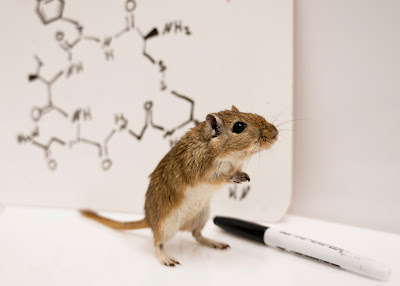By Carol Clark
Chikako Ozawa-de Silva, Emory professor of anthropology, was born and raised in Kagoshima on the southernmost tip of Japan — a historically rich area where different cultures flowed through with the sea trade.
“I’ve always been interested in understanding human beings from a cross-cultural perspective,” Ozawa-de Silva says. She graduated from Sophia University in Tokyo before heading to Oxford University for a PhD in social and cultural anthropology. Research fellowships took her to Harvard and the University of Chicago before she joined Emory in 2003.
Her research focuses on the impacts of culture on well-being, including how people experience and respond to suffering.
Ozawa-de Silva’s most recent book is titled “The Anatomy of Loneliness: Suicide, Social Connection, and the Search for Relational Meaning in Contemporary Japan.” Published by the University of California Press, the book won the Society for East Asian Anthropology’s 2022 Francis Hsu Book Prize. The prize committee called the work “poignant, richly ethnographic and an exemplary instance of a book that really speaks beyond our field. . . . Ozawa-de Silva writes about suicide and loneliness in Japan in ways that speak to wider global trends while giving us some hint at potentially better ways to live.”
“The Anatomy of Loneliness” also received the 2022 Victor Turner Prize in Ethnographic Writing honorable mention, presented by the Society for Humanistic Anthropology. “This book is a jarring, empathic, and even paradoxical diagnosis of emerging collective social structures that make people feel alone,” the prize committee wrote. “Along the way, readers are introduced to a brave and novel vision for what an inclusive society might mean.”
In the following Q&A, Ozawa-de Silva talks about her research into loneliness in Japan as well as the worldwide epidemic of loneliness and ways to potentially reduce it.
Why did you want to write this book?
In 1998, the suicide rates in Japan jumped across the population — and by more than 50 percent among adolescents — but no one quite understood why. They remained elevated for the next decade. New forms of suicide were emerging, such as internet group suicide, in which individuals come together online and then agree to meet in person to commit suicide collectively.
There was also a rise in the phenomenon of “hikikomori,” or social withdrawal, when young people do not leave their houses for extended periods of time, instead remaining secluded and entirely dependent on their parents.
As I researched the causes of suicide in Japan, I discovered one of these to be a deeper underlying issue facing Japanese society — pervasive loneliness.
How do you define loneliness?
You can be alone at times and not be lonely. But you can also be physically among people and feel very lonely.
By loneliness I mean a deep, pervasive sense of not being accepted or acknowledged by others. You feel that you are not cared for or loved. You don’t feel safe.
On the flip side, when you feel safe and “at home,” it is more difficult to feel lonely.
Japan may be ahead of the curve compared to many places but it is not the only country facing this problem of pervasive loneliness. The U.S. Surgeon General Vivek Murthy called loneliness a “growing health epidemic” and referenced research showing that social isolation is associated with a reduction in lifespan similar to that caused by smoking 15 cigarettes a day.
And in 2018, the UK appointed its first minister for loneliness. Loneliness is increasingly recognized globally as a major public health problem.
What is driving the epidemic of loneliness?
People tend to think of loneliness as an individual issue but it’s a much bigger problem. Society is producing loneliness. Social structures that diminish compassion and kindness produce loneliness.
For example, both Japanese and U.S. societies overemphasize productivity at the expense of everything else. So even how we evaluate our self-worth becomes based on our productivity.
Society is saying that everyone needs to be a striker and to score a lot of points. But you also need midfielders and other players who can pass the ball to the striker.
No one can win all the time. Even if you are super productive in your job or in other ways, at some point as humans beings we start slowing down and losing productivity.
And, it seems paradoxical, but being a highly productive winner can feel lonely. The moment you feel special and different from others your sense of connection to them is not as strong.
Nothing is wrong with being productive but when you overemphasize its value over everything else you lose so much.
How can this problem be solved?
The solution is empathy. From a very young age, children are expected to compete with one another but they also need to learn empathy. Research, including research here at Emory, demonstrates that empathy is a skill that can be taught.
By empathy I don’t mean just feeling someone else’s pain. That can be empathic distress. It’s making the problem about yourself because now you are feeling pain and you want to reduce your own pain.
Empathy is ultimately about understanding and respecting someone else’s emotions and differences. Cultivating empathy helps produce a sense of belonging. We need to take empathy seriously and help children and young people build skills such as the art of truly listening to other people. It’s important to learn to love and respect other people not for what they can do for you but for who they are.
Increasingly, I see empathy as central to the discipline of anthropology and to the project of diversity and inclusion. My next book will be on empathy and intimacy.
Once you develop empathy skills, compassion is the next stage. Compassion is the wish to reduce the pain of other people.
How has the pandemic influenced the problem of loneliness?
When the pandemic hit, many more people were suddenly exposed to loneliness. If you didn’t experience loneliness yourself, you probably know someone who did. Loneliness became everybody’s business.
I hope that the growing awareness of loneliness and the harm it can cause will help to destigmatize it. People may become more receptive to the need to find solutions to the problem.
The pandemic also made some people take a closer look at their values. Some cracks are starting to show in the idea of focusing on productivity over everything else. We are seeing some shifts toward people prioritizing their quality of life through trends like “quiet quitting,” [or doing the minimum in a job], and the “great resignation,” which could actually be a sign of having more empathy and self-compassion.
Related:
How grandmothers' brains react to the sight of their grandchildren






















